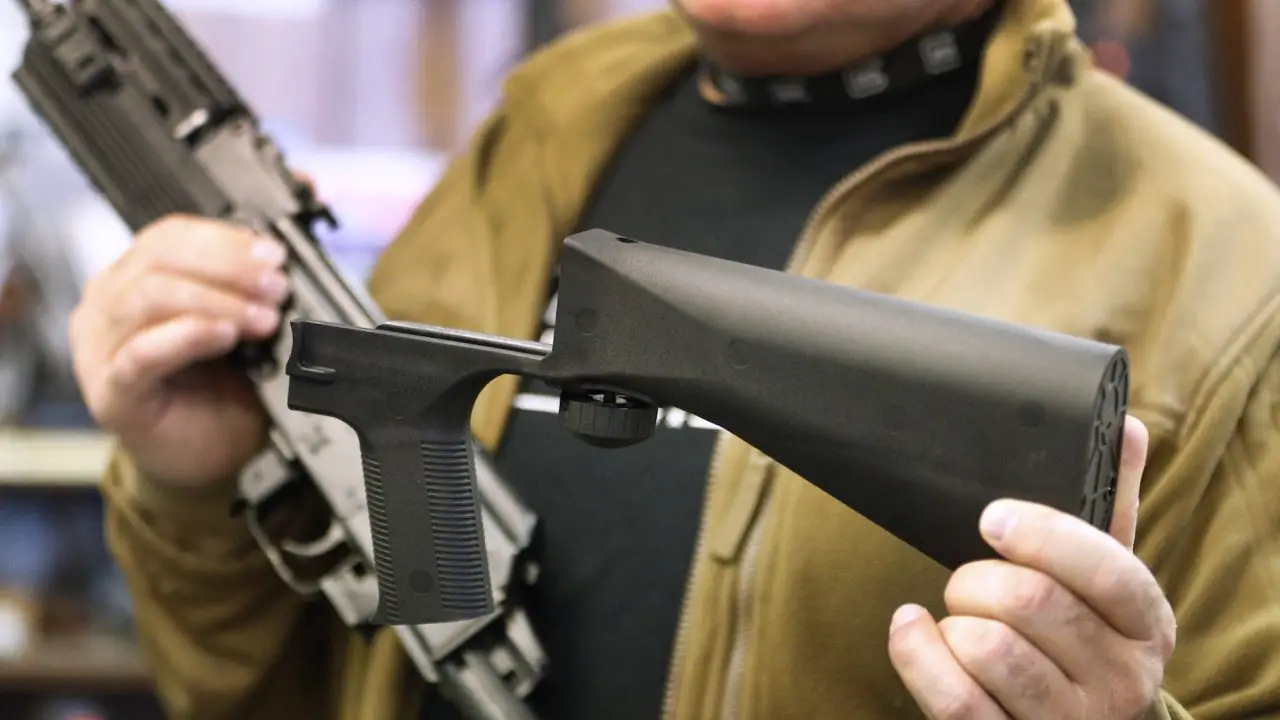On Sunday night, October 1 at the Route 91 Harvest music festival in Las Vegas, Stephen Paddock opened fire and shot hundreds of rounds into the crowd from his hotel room at the Mandalay Bay hotel. While the shooting only lasted about ten minutes, he managed to kill fifty-eight people and injured hundreds more.
When police had burst into his hotel suite, they found him dead and with an arsenal of twenty-three guns. At least a dozen of those guns had bump stocks that allowed Paddock to shoot close to a hundred rounds in the matter of a few seconds.
Still, nobody knows exactly why Paddock opened fire onto the crowd that was just there to have fun. This shooting, along with all of the other senseless mass shootings that have occurred over the past few years, has reignited the gun-control debate.
According to the Gun Violence Archive, a non-profit organization that provides online public access to gun-related information in the United States, there have been two hundred and eighty mass shootings in the country in 2017 alone, yet we only hear about the deadliest ones. It took the deadliest mass shooting in our country and the use of bump stocks to spark some hope for stricter gun control laws.
So, what are bump stocks?
Bump stocks are pieces of plastic or metal that are molded into the part of the gun that is rested on the shoulder. Once put one on a rifle, it frees the weapon to slide back and forth quickly by harnessing the energy from the gun’s natural recoil. After the shooter pulls the trigger, the stock bumps back and forth between the shooter’s shoulder and trigger finger allowing the gun to quickly fire. This enables the shooter to shoot large amounts of rounds within seconds. It basically turns a regular rifle or semi-automatic gun into an automatic weapon. The main difference though? Regular automatic guns are illegal for private citizens to own, but bump stocks are not illegal under federal law.
[su_youtube url=”https://www.youtube.com/watch?v=VCx1rgxXVKA”]
Why are bump stocks not illegal?
You might be thinking, well, if this piece of plastic turns a regular gun into a full-blown, dangerous automatic weapon, why isn’t it illegal? Bump stocks were first introduced in 2010 and were sold for a few hundred dollars, which is pretty cheap considering the damage they can cause. However, they aren’t illegal because they don’t actually modify the weapon’s mechanical components. This is where the debate around bump stocks is formed. Many people believe that bump stocks should be illegal because they turn regular guns into dangerous automatic weapons.
The true power of the bump stock
The New York Times recently wrote an article that compared the semiautomatic assault rifle used at the 2016 Pulse nightclub shooting in Orlando, one of Stephen Paddock’s guns with the bump stock and a regular automatic weapon. They took the audio of the gunshots used from each gun and when you listen to each individual weapon, there is a striking familiarity between the gun used in the Las Vegas shooting and an actual automatic weapon.
The gun used in the Orlando shooting fired twenty-four shots in nine seconds while the gun used in Las Vegas shot ninety shots in ten seconds and the automatic weapon fired ninety-eight shots in seven seconds. While twenty-four shots in nine seconds is scary in itself, the fact that the gun used in Nevada shot ninety shots for one second longer, is even worse.
These pieces of plastic are changing the gun control debate
On October 4, Sen. Dianne Feinstein, a longtime advocate for stricter gun control laws, introduced a bill that would ban the sale and possession of bump-stock equipment and any other pieces of equipment that can turn a semiautomatic weapon into an automatic one.
The bill states that, “it shall be unlawful for any person to import, sell, manufacture, transfer or possess, in or affecting interstate or foreign commerce, a trigger crank, a bump-fire device or any part, combination of parts, component, device, attachment or accessory that is designed or functions to accelerate the rate of fire of a semiautomatic rifle but not convert the semiautomatic rifle into a machine gun.”
This bill, the Automatic Gunfire Prevention Act, is purposely broad, so it would not only ban bump stocks but any accessory that would turn a semiautomatic weapon into an automatic one.
And just last week, the National Rifle Association and the Republican party publically stated that there should be stricter laws for bump stocks. Yes, the NRA and Republicans who are usually against the Democratic party on the gun control issue and fight for fewer gun restrictions, think that there should be a ban on bump stocks. Even after the mass shooting at Sandy Hook Elementary School in Newtown, Conn., Republican leaders shot down bipartisan legislation to have stricter background checks for people trying to purchase a gun.
On October 4, Republicans said that they would be open to banning bump stocks. Republican Senator John Cornyn, an avid hunter from Texas, even stated, “’It seems like it’s an obvious area we ought to explore and see if it’s something Congress needs to act on.’”
The following day, the NRA, the country’s biggest gun-rights group, followed suit and announced they were joining the effort. They stated, “’The NRA believes that devices designed to allow semi-automatic rifles to function like fully-automated rifles should be subject to additional regulations.’”
However, there are still some Republicans who believe that gun control should not be a thing at all. Like Republican Senator Richard Shelby telling CNN, “I’m a Second Amendment man. I’m not for any gun control. None.”
Despite some politicians still opposing gun control, the fact that other Republicans believe that bump stocks should be banned is a huge step forward for the gun control debate and for both sides seeing eye-to-eye on this issue.

















